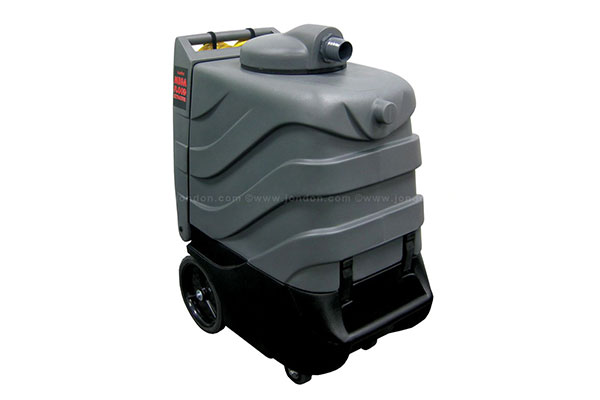Obviously the best way to dry homes and buildings after a water loss is to physically remove as much water as is possible before setting up drying equipment. It is a fact that it is 500 times easier and quicker to physically remove water from a structure than it is to evaporate it. The water restoration industry has come a long way from using just shop vacuums and carpet cleaning wands to extract water. Now days a restorer has several different options when it comes to what kind of water extractors are available to assist in water extraction.
Types of Water Extractors
The Carpet Wand – although these are not the end-all of water extractors, they are the starting point, the first tool that should always be used. A wand enables the restorer to remove the “easy” water quickly; the standing water, puddles, and pools, especially when the water is on bare concrete or wood floors. If the water has affected glue-down or commercial grade carpet, with no cushion installed under it, the wand may be the only extraction tool necessary.
Portable Flood Extractors – these are self-contained extractors that have a built-in pump. They still require a carpet wand but having the extractor machine close to the flooded area and with a short vacuum hose, they are very effective in removing water. They really work well when the restorer cannot get a truck-mount system close or the work is several stories up in a building. Popular models include those made by KleenRite and Dri-Eaz.
Deep Extraction Tools – these tools are designed to remove water through carpet and cushion. They can be mechanical (ride-on) or manual. There are two different types, vacuum sealed and weighted. Vacuum sealed extractors create a tight seal to remove water from carpet and cushion. An example of this type of tool is the Water Claw. Water Claws come in several different sizes and are great to use it tight spots and around bathroom fixtures where other extractors can’t fit. The technician places the Water Claw on wet carpet and then uses his or her own weight to compress the carpet and cushion. The Water Claw has a clear top so that the technician can see when the water has been extracted in that area. The Claw is then moved to the next area and the process is repeated until the entire area has been extracted.
Weighted extractors come in mechanical and manual styles. Some can be ridden on, some are walk-behind. They work by compressing the carpet and pad as they vacuum out the water. These units are not self contained in that they are usually connected to a truck-mounted vacuum system. Examples of these are the Dri-Eaz Rover, a ride-on machine, and the Phoenix Hydro-X Xtractor, which can be used as a ride-on or a walk-behind. While the Phoenix must be steered by a handlebar control, like steering a bicycle, the Rover is driven by a joystick.
The Phoenix also has an optional attachment that makes it self-contained, a Vacuum Pac. The Vacuum Pac can be connected directly to the Hydro-X to replace the need for a truck-mount vacuum system. In this way the Hydro-X can be used like a portable flood extractor so that it can be used in places that a truck-mount system can’t reach effectively.
Performing Water Extraction
As was stated earlier, no matter which type of extractor is used, a carpet wand should be the first line of attack. It works the fastest and will remove enough water that later, as heavier extractors are employed, the remaining water will not easily flow back into previously extracted areas.
When the technician follows up the wand extraction and begins to use the secondary, heavier extraction machines, more than one pass over an area will usually be required. The only way to tell how many passes are required is for the restorer to detach the carpet from the tack strip and squeeze the cushion to see how much water is still there. If no water can be squeezed out of the cushion, as much water as possible has been physically removed and heavy extraction is complete. That same number of passes should then be used across the entire area.
Extraction efforts should start around the perimeter of the room and work towards the center. The hose connecting the extractor to the vacuum system should be kept as short as possible to increase the vacuum’s suction. If a truck-mount is being used, the hose should be attached directly to the vacuum unit and not be on a “live” or “active” hose reel. The largest diameter hose that fits the extractor should also be used.
After completing any heavy extraction, the technician should once again go over the entire area or room with the carpet wand. This will help remove anything the heavy extractor may have left behind or missed.
Professional Assistance
The mold and water damage experts at Water Mold Fire Restoration will assist you anytime water has damaged your home. Our technicians have access to the best flood and water extractors in the industry and they are certified in use of them. No job is too large or too small. It is important to address any water loss situation in your home or business as soon as it is discovered. That is why you can reach us and talk to one of our water damage experts any time of the day or night by calling 800-905-0277 or you can reach us by email at help@watermoldfire.net.








